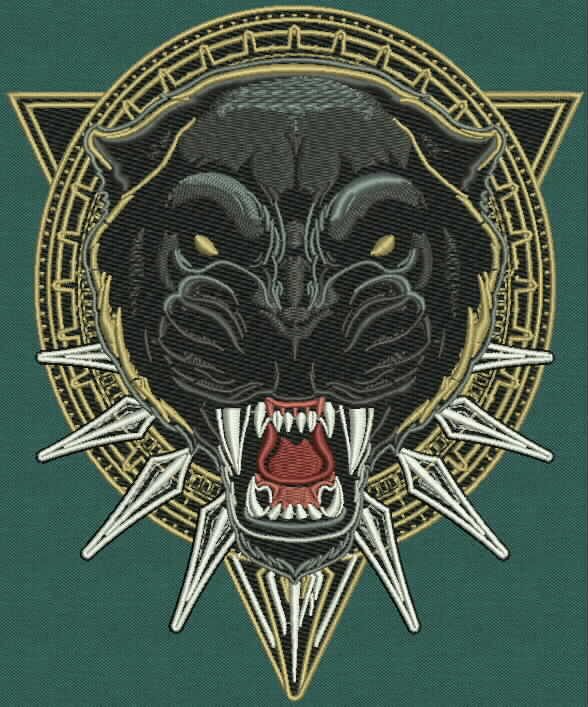Check Out Different Kinds of Embroidery Digitizing Techniques
Needlework digitizing has advanced substantially over the years, using a myriad of techniques to bring styles to life in the digital world. From the elaborate artistry of typical hand embroidery digitizing to the accuracy of the boxing method, and the ease of auto-digitizing software application, the choices are substantial. Additionally, the world prolongs to advanced methods like photorealistic needlework digitizing and the remarkable realm of 3D embroidery digitizing. Each technique brings an one-of-a-kind set of possibilities and challenges to the table, making the exploration of these techniques a compelling journey for those in the embroidery globe.
Typical Hand Needlework Digitizing
Standard hand needlework digitizing includes the process of converting elaborate hand-stitched layouts into digital formats for machine needlework. This strategy needs skilled artisans to diligently assess the handmade design and afterwards make use of specialized software program to recreate it in a digital style. Each stitch, color, and information needs to be very carefully translated to make certain that the significance of the original hand embroidery is preserved in the electronic variation.
One of the key obstacles of typical hand needlework digitizing is recording the complexities and nuances of the handmade layout. Digitizing for Embroidery. Artisans must have a deep understanding of different embroidery methods, such as satin stitch, chain stitch, and French knots, to precisely reproduce these methods in the digital world. Furthermore, they need to have an eager eye for detail to ensure that the electronic layout keeps the same degree of creativity and workmanship as the original hand-stitched item
Punching Method
To seamlessly shift from typical hand embroidery digitizing to the punching technique, craftsmens should now concentrate on converting the complex digital styles right into instructions that needlework machines can analyze. The punching method entails using specialized software program to produce electronic files which contain commands for the embroidery maker to follow. This process calls for a deep understanding of not just the design itself yet also the abilities and constraints of the embroidery machine.

Auto-Digitizing Software Programs
Embroidery digitizing has been changed Continued by the advent of auto-digitizing software programs, offering artisans with advanced tools to convert electronic layouts right into needlework equipment guidelines successfully. Auto-digitizing software program programs make use of formulas to examine electronic pictures or vector data and produce embroidery designs automatically. These programs permit fast and exact conversion of intricate layouts right into stitch patterns, saving time and effort for embroiderers.
Among the vital benefits of auto-digitizing software application is its easy to use user interface, making it available to both beginners and experienced digitizers. These programs frequently consist of features such as stitch editing and enhancing tools, thread shade matching, and the capability to preview the final embroidered design. Additionally, auto-digitizing software can take care of complicated designs with numerous colors and intricate information, producing premium embroidery documents suitable for numerous clothing and fabric jobs.
While auto-digitizing software supplies comfort and efficiency, it is crucial for users to recognize the limitations of automated digitizing. Fine-tuning and hand-operated modifications may still be called for to accomplish the wanted needlework quality, specifically when taking care of elaborate or one-of-a-kind styles. By leveraging the capacities of auto-digitizing software application alongside hands-on digitizing techniques, artisans can boost their embroidery digitizing procedure and create sensational stitched items.
Photorealistic Needlework Digitizing
Utilizing advanced digital imaging strategies, attaining photorealistic cause embroidery digitizing has come to Find Out More be a sought-after skill amongst modern-day artisans. This method includes transforming high-resolution images into complex stitch patterns that very closely resemble the original layout, resulting in embroidery pieces that display natural information and depth.
To achieve photorealistic embroidery digitizing, craftsmens have to have a keen eye for detail and a detailed understanding of just how different stitch kinds and thickness can influence the last end result. By carefully mapping out each color and shade in the picture, embroiderers can produce an electronic documents that overviews the needlework equipment to reproduce the subtleties of the initial image properly.
Photorealistic needlework informative post digitizing is specifically prominent in developing personalized layouts for garments, home decor, and art pieces where capturing the significance of a photograph or artwork is important. This technique allows artisans to change memories, landscapes, pictures, and detailed art work right into sensational embroidered work of arts that showcase a mix of typical workmanship and cutting-edge modern technology.
3D Needlework Digitizing
With the improvement of digital imaging techniques in achieving photorealistic outcomes in needlework digitizing, the exploration of 'D Needlework Digitizing' supplies a brand-new dimension to the intricacies of style replication. 'D Embroidery Digitizing' refers to the three-dimensional digitizing technique that includes depth and texture to embroidery designs, developing a much more reasonable and aesthetically attractive final item. This method utilizes software that imitates the impact of light and shadow on the needlework layout, improving its total visual impact.
Among the essential advantages of 'D Embroidery Digitizing' is its capacity to make styles look more natural and vibrant. By including depth to the needlework design, the last product shows up much more realistic and exciting (Digitizing for Embroidery). Additionally, this strategy allows for even more innovative flexibility in style execution, enabling embroiderers to trying out different appearances and results that were previously testing to achieve
Final Thought
